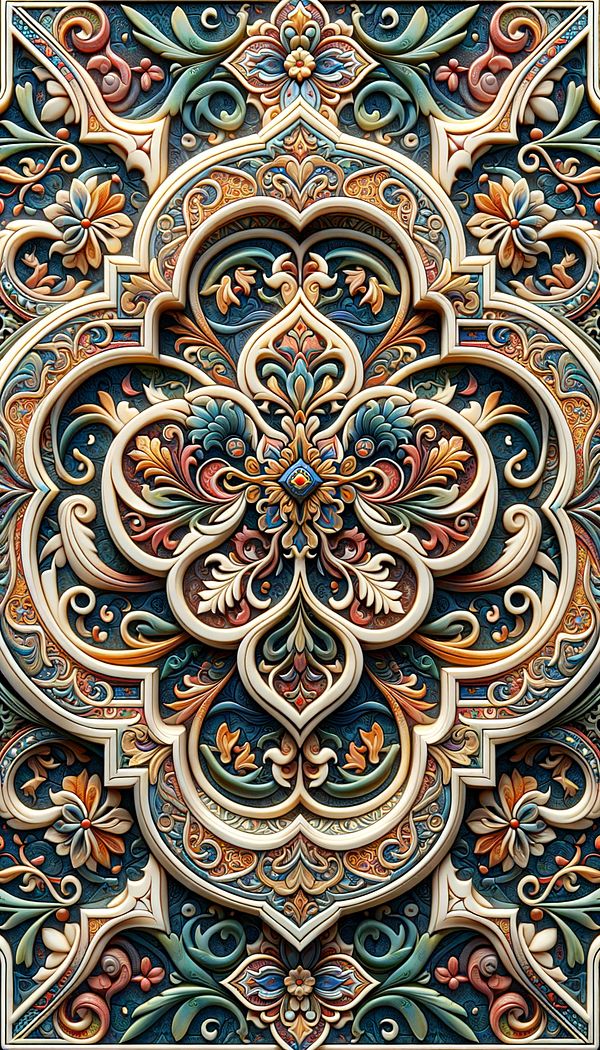What is an Arabesque?
An intricate pattern of interlaced lines, often incorporating floral and geometric motifs.
Description
Arabesque is a term used in interior design to describe a decorative style that features complex, intertwining patterns, often incorporating floral, foliage, and geometric shapes. The design is characterized by its fluid and ornate detailing, creating a sense of movement and elegance. Originating from Islamic art, the Arabesque pattern has since been embraced by various cultures and can be found in a wide range of decorative contexts including textiles, wall treatments, tiles, and metalwork.
The beauty of Arabesque lies in its versatility and its ability to adapt to different materials and surfaces. It can add an exotic touch to a space, offering a blend of sophistication and mystery. Whether used in a small accent piece or as a bold statement in room decor, Arabesque patterns bring a unique aesthetic that crosses cultural boundaries.
Usage
Arabesque patterns are often found in the design of rugs, wallpapers, textile and upholstery, as well as ceramic tiles. These patterns can also be incorporated into architectural elements like windows, door frames, and mirrors, adding a decorative touch to both traditional and contemporary interior styles.
FAQs
-
What is the origin of Arabesque?
Arabesque has its roots in Islamic art, where it was developed as a form of decoration that avoids the depiction of living beings, in accordance with Islamic teachings.
-
How is Arabesque used in contemporary design?
In contemporary design, Arabesque patterns are used in a variety of ways, from accent pieces like cushions and throws to larger implementations such as feature walls and flooring. It adds a timeless elegance and a nod to cultural heritage in modern interiors.
-
Can Arabesque patterns be combined with other design styles?
Yes, Arabesque can blend beautifully with various design styles, including modern, traditional, and eclectic. Its intricate patterns can complement a range of decors, adding depth and interest to the space.
-
Are Arabesque patterns only available in certain colors?
No, Arabesque patterns come in a wide range of colors. While traditional Arabesque designs may favor earth tones and blues, contemporary interpretations experiment with a broad spectrum of colors to suit different tastes and interior schemes.
Practical Application
When incorporating Arabesque designs into an interior, consider using them as focal points to draw attention and add intrigue to the space. For a subtle application, choose small decorative items or textiles with Arabesque motifs. For a bold statement, incorporate larger elements like a feature wall or an ornately patterned floor. Mixing and matching colors and materials can also highlight the versatility and beauty of Arabesque patterns.
-
Decorative Techniques322 articles
-
Decorative Objects240 articles
-
Wall Treatments & Finishes157 articles
-
Apothecary ChestAn apothecary chest is a type of storage furniture originally used to store medicines and herbs.
-
TaffetaTaffeta is a crisp, smooth, woven fabric known for its lustrous sheen and delicate texture.
-
StrippingStripping in interior design refers to the process of removing layers of paint, wallpaper, varnish, or other coatings from surfaces.
-
Spiral LegA spiral leg is a furniture leg characterized by its twisted or helical shape.
-
LambrequinA lambrequin is a kind of decorative drapery or wood paneling that extends down the sides of a window or arch, often used in conjunction with curtains or blinds.
